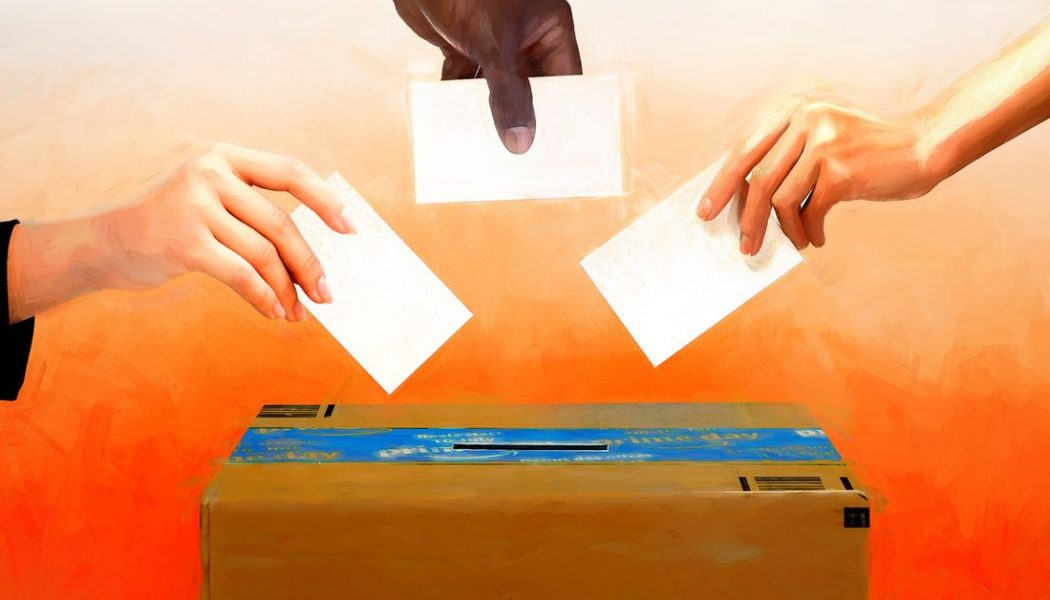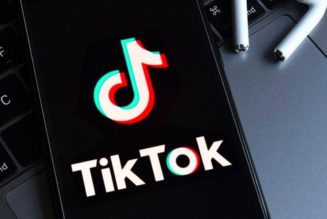
For the last seven weeks, workers at an Amazon warehouse in Bessemer, Alabama, have been voting by mail on whether to unionize. Their ballots are due on Monday, March 29th, and counting will begin the next day. If the union wins, the warehouse employees would become the first members of Amazon’s US workforce to unionize, a momentous event at a company that has long aggressively resisted labor organizing, and one that could be a first step toward improving conditions at the country’s second-largest employer. Here is what’s happened so far and what might happen next.
Who’s voting?
The vote is taking place at an Amazon warehouse called BHM1 in Bessemer, Alabama, outside Birmingham. It opened recently, beginning operations last March, but by the summer workers had grown frustrated enough with conditions there that they reached out to the Retail, Wholesale, and Department Store Union, which had a presence at nearby poultry plants and other businesses. By November organizers had gathered sufficient signatures to petition the National Labor Relations Board for an election, which is being held by mail due to the pandemic. In total, nearly 6,000 workers are eligible to vote.
Why are they unionizing?
Employees say Amazon’s demanding and automatically enforced productivity metrics make work grueling, stressful, and dehumanizing. Amazon tracks two metrics: the average rate at which workers perform a task, called “takt time,” and how much time they spend not scanning items, called “time off task.” If workers fail to maintain a fast pace, they get reprimanded or fired.
“It’s hard to do, especially when you have a lot of big products coming,” said Perry Connelly, a worker at BHM1 who supports the union. “It got to the point where people started complaining about going to the bathroom and coming back and something being said to them about their takt time going up.” This is a common complaint among workers at BHM1 and other Amazon facilities.
In an emailed statement, Amazon spokesperson Heather Knox said that “like most companies, we have performance expectations for every Amazonian – be it a corporate employee or fulfillment center associate, and we measure actual performance against those expectations.” Knox said performance is “measured and evaluated over a long period of time” and that “we support people who are not performing to the levels expected with dedicated coaching to help them improve.” Knox also said that workers “are allowed to grab a snack, water, or use the toilet whenever needed” but did not directly address workers’ complaints that they are penalized for doing so.
Connelly and other workers hope a union can improve working conditions and create a process around dismissals that feels less arbitrary. “I just want the people to get treated with respect,” Darryl Richardson, one of the employees to initially reach out to the RWDSU previously told The Verge.
Workers also hope a union can negotiate higher pay. Many of the workers are acutely aware that Amazon has done stupendously well during the pandemic, with profits up 84 percent in 2020 and Jeff Bezos’ personal wealth rising by about $70 billion. Meanwhile, many BHM1 workers like Connelly have seen their wages drop: BHM1 opened in March, when Amazon had implemented $2 per hour in additional hazard pay, a program the company ended in June, dropping their pay to $15.30 an hour. “A lot of people are talking about the fact that he received billions of dollars in the pandemic from all his facilities, but he didn’t kick none of that money back to his employees who were actually working and in the trenches for him,” said Connelly.
If the pandemic sharpened employees’ grievances, the Black Lives Matter protests last summer following the killing of George Floyd helped galvanize many to act. The majority of workers at BHM1 are Black, and many participated in the protests around Birmingham. The RWDSU has also framed the campaign as a matter of civil rights and racial justice.
“A lot of the employees at Amazon are Black, and a lot are tired of being treated any kind of way, talked to any kind of way, and being treated like they’re less than anyone else,” said Connelly. “With Black Lives Matter coming in, it’s showing that you have a voice now — let’s do something with it. Right now, the union is another entity of that voice.”
Why is this a big deal?
Amazon is the second-largest private employer in the US, with 800,000 employees, and it has fiercely resisted attempts at worker organizing. The only other unionization effort to make it to a vote was in 2014, with a small group of repair technicians in Delaware, and it failed after an aggressive anti-union campaign. More recently, the NLRB found that Amazon threatened and fired workers who protested the company’s handling of COVID-19. While the Bessemer effort would only organize a single warehouse, it would show that it can be done. Already, employees at other Amazon facilities have expressed interest in following in BHM1’s footsteps.
“There’s a basic principle of organizing work that success breeds success, and that organizing often happens in self-reinforcing cycles of victory,” said Benjamin Sachs, a professor at Harvard Law School. “Organizing requires workers taking a risk, and the workers are more likely to take a risk when they see that the risk is going to pay off.”
Such a chain reaction could do more than change the conditions that hundreds of thousands of Amazon employees work under. Because of its size and the sprawling geographic scope of its logistics network, the quality and pay of Amazon’s jobs have a powerful effect on the quality and pay of other jobs. Amazon itself has been touting this effect in its ads lobbying for a $15 minimum wage, and indeed, a recent study found that when Amazon raised its starting wage to $15 an hour in 2018, wages at nearby employers also rose.
But when Amazon jobs are compared to similar types of work, they come off much worse. Logistics jobs were historically a path to the middle class, and unionized warehouses typically pay double what Amazon does. When Amazon opens a warehouse, a Bloomberg analysis found, wages at other nearby warehouses often drop. Amazon’s methods for worker tracking and enforcing productivity — aspects of the job that prompted BHM1 to unionize — have also spread across the logistics industry and other sectors as companies attempt to compete with Amazon.
Sachs calls Amazon a bellwether employer, for its outsize role in shaping the labor market and defining the future of work, similar to the role the auto industry played in the early 20th century. “The unionization of that industry, which had a lot to do with labor law reform, was a defining moment for the labor market for decades,” he said.
What’s been Amazon’s response this time?
Amazon has been waging an aggressive campaign against the union effort, sending workers multiple texts a day urging them to vote no. It ran Facebook ads directing to a website that warned workers they would have to pay union dues (Alabama is a right-to-work state, and an NLRB complaint has been filed regarding the website.) Management put up banners on the walls and signs on the restroom stall doors with messages like “Where will your dues go?” and “Unions can’t, we can!” The company has brought in a high-priced union-busting firm and held mandatory meetings at the warehouse. “They call them training sessions, but all it was was union bashing,” said Connelly.
Knox, the Amazon spokesperson, defended the company’s response to the union effort. “It is important that all employees understand the facts of joining a union and the election process,” Knox wrote. “We hosted regular information sessions for all employees, which included an opportunity for employees to ask questions, and educated through other channels as well.”
The company has also employed more unorthodox measures. After losing its fight to have the election held in-person, Amazon sent employees mailers with instructions on filling out their ballot with a “no” vote and messaged them to deposit their ballots in a new mailbox installed at the warehouse entrance, Vice reported. (Knox said “the mailbox was installed by the USPS and an option for convenient mailing to and from work but never a mandate.”)
Employers have extreme structural advantages over organizers under US labor law, like their ability to hold mandatory anti-union presentations on company time while restricting non-work conversations and barring non-employee organizers from the workplace. Consequently, organizers are often left to canvass employees on nearby streets and sidewalks — or, in the case of BHM1, the parking lot as departing employees waited for the light to change. Then, late last year, Amazon asked the county to change the timing on the traffic light. Knox said this was done to reduce congestion during shift changes, but organizers say it made their work harder.
How do things look?
It’s been a hard fought campaign on both sides. Organizers expect the vote to be close, though Connelly is optimistic. More than 3,000 workers had signed cards expressing interest in a union in the runup to the election, an organizer previously told The Verge, more than enough to win if they all voted yes. However, given Amazon’s high rate of turnover, many of the workers who signed cards may no longer work there, and others may have been convinced by Amazon’s anti-union blitz.
In recent weeks, the union has been buoyed by a series of outside supporters, most notably President Biden, who released a video message on Twitter last month alluding to the campaign. Sen. Bernie Sanders (I-VT) and activist and rapper Killer Mike visited the warehouse on Friday, the latest in a string of official and celebrity delegations to Bessemer. The high-profile support has changed some minds, Connelly said, but the lengthy voting period means that some had already sent in ballots and had to request new ones to change their votes. “I think it’s a big swing around in the last month and a half,” Connelly said.
What happens next?
Ballots have to be received by the National Labor Relations Board regional office by the end of the business day on Monday, March 29th. Counting will begin Tuesday morning but it may be several days before we know the result as the NLRB adjudicates any challenges and objections brought by either side.
If the union wins, its fight won’t be over. Companies often stonewall in negotiations over a first contract, requiring further public and political pressure from the union. “There are so many examples of where unions win elections, and eventually they walk away because they cannot get the company to bargain in good faith and to get to a first contract,” said Janice Fine, a professor of labor studies and employment relations at Rutgers University.
If the union loses, attention will turn to seeds of activism the Bessemer campaign has sown across Amazon’s network. The fact that the workers at BHM1 have made it this far, Fine said, is already a victory, given the way US labor law and Amazon’s power puts organizers at a disadvantage. Getting to an election is a signal to unions that it can be worth the energy and expense of attempting to organize Amazon workers, and to workers that the risks they take might pay off. There are already signs that workers are taking that lesson from Bessemer. Since the campaign began, the RWDSU said it has already been contacted by over 1,000 Amazon workers interested in unionizing.










